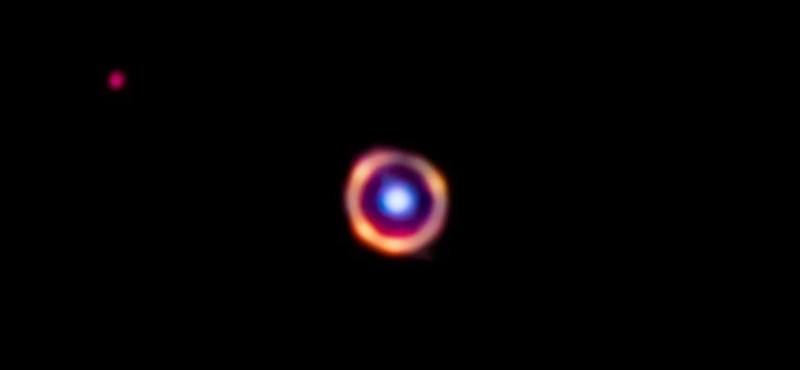[{“available”:true,”c_guid”:”6f8b166e-8ff3-45dd-bc5d-4d78fe6c68a6″,”c_author”:”hvg.hu”,”category”:”itthon”,”description”:”A XVIII. kerületben egy elbénázott drogvásárlás vezetett odáig, hogy két dílert és két fogyasztót is elkaptak a rendőrök.”,”shortLead”:”A XVIII. kerületben egy elbénázott drogvásárlás vezetett odáig, hogy két dílert és két fogyasztót is elkaptak…”,”id”:”20230623_horgaszok_kokain_budapest”,”image”:”https://api.hvg.hu/Img/ffdb5e3a-e632-4abc-b367-3d9b3bb5573b/6f8b166e-8ff3-45dd-bc5d-4d78fe6c68a6.jpg”,”index”:0,”item”:”e321262e-9adf-4aef-9f7c-913ad95ccc1d”,”keywords”:null,”link”:”/itthon/20230623_horgaszok_kokain_budapest”,”timestamp”:”2023. június. 23. 09:31″,”title”:”Kokainoztak volna pecázás közben, a rendőrség horgára akadtak”,”trackingCode”:”RELATED”,”c_isbrandchannel”:false,”c_isbrandcontent”:false,”c_isbrandstory”:false,”c_isbrandcontentorbrandstory”:false,”c_isbranded”:false,”c_ishvg360article”:false,”c_partnername”:null,”c_partnerlogo”:”00000000-0000-0000-0000-000000000000″,”c_partnertag”:null},{“available”:true,”c_guid”:”1dd634b0-f3da-492f-b377-f475f3ed957c”,”c_author”:”hvg.hu”,”category”:”elet”,”description”:”Chris Brown azt mondja, biztonsági okokból lépett vissza a később szerencsétlenül végződött úttól. “,”shortLead”:”Chris Brown azt mondja, biztonsági okokból lépett vissza a később szerencsétlenül végződött úttól. “,”id”:”20230623_Megszolalt_az_uzletember_aki_majdnem_elindult_a_Titan_expedicion_de_meggondolta_magat”,”image”:”https://api.hvg.hu/Img/ffdb5e3a-e632-4abc-b367-3d9b3bb5573b/1dd634b0-f3da-492f-b377-f475f3ed957c.jpg”,”index”:0,”item”:”6be299e3-3b6b-41f1-87b9-10cc93180d38″,”keywords”:null,”link”:”/elet/20230623_Megszolalt_az_uzletember_aki_majdnem_elindult_a_Titan_expedicion_de_meggondolta_magat”,”timestamp”:”2023. június. 23. 10:09″,”title”:”Megszólalt az üzletember, aki majdnem elindult a Titan-expedíción, de meggondolta magát”,”trackingCode”:”RELATED”,”c_isbrandchannel”:false,”c_isbrandcontent”:false,”c_isbrandstory”:false,”c_isbrandcontentorbrandstory”:false,”c_isbranded”:false,”c_ishvg360article”:false,”c_partnername”:null,”c_partnerlogo”:”00000000-0000-0000-0000-000000000000″,”c_partnertag”:null},{“available”:true,”c_guid”:”f58bc47f-4076-4032-aea1-647ba012dce1″,”c_author”:”hvg.hu”,”category”:”itthon”,”description”:”Az idős férfi beismerte a bűnösségét és lemondott a tárgyaláshoz való jogáról, 1 év 6 hónapot kapott első fokon. “,”shortLead”:”Az idős férfi beismerte a bűnösségét és lemondott a tárgyaláshoz való jogáról, 1 év 6 hónapot kapott első fokon. “,”id”:”20230623_Ra_akart_gyujtani_a_betegagyban_leegett_a_korterem_benne_egy_masik_beteggel”,”image”:”https://api.hvg.hu/Img/ffdb5e3a-e632-4abc-b367-3d9b3bb5573b/f58bc47f-4076-4032-aea1-647ba012dce1.jpg”,”index”:0,”item”:”ba8ffec6-1d19-4592-b607-02158c5ac72b”,”keywords”:null,”link”:”/itthon/20230623_Ra_akart_gyujtani_a_betegagyban_leegett_a_korterem_benne_egy_masik_beteggel”,”timestamp”:”2023. június. 23. 13:07″,”title”:”Rá akart gyújtani a betegágyban, leégett a kórterem, benne egy másik beteggel”,”trackingCode”:”RELATED”,”c_isbrandchannel”:false,”c_isbrandcontent”:false,”c_isbrandstory”:false,”c_isbrandcontentorbrandstory”:false,”c_isbranded”:false,”c_ishvg360article”:false,”c_partnername”:null,”c_partnerlogo”:”00000000-0000-0000-0000-000000000000″,”c_partnertag”:null},{“available”:true,”c_guid”:”bc9ef7fe-d17a-4617-ab23-fbcae37061b6″,”c_author”:”hvg.hu”,”category”:”itthon”,”description”:”A BKK perre megy a német céggel, októberben kezdődhet az eljárás, ítélet 2024 első negyedévére lehet.”,”shortLead”:”A BKK perre megy a német céggel, októberben kezdődhet az eljárás, ítélet 2024 első negyedévére lehet.”,”id”:”20230623_deak_ter_belepteto_kapuk_per_buntetoeljaras”,”image”:”https://api.hvg.hu/Img/ffdb5e3a-e632-4abc-b367-3d9b3bb5573b/bc9ef7fe-d17a-4617-ab23-fbcae37061b6.jpg”,”index”:0,”item”:”fa2d437a-72af-4a40-a426-dbaed88829c4″,”keywords”:null,”link”:”/itthon/20230623_deak_ter_belepteto_kapuk_per_buntetoeljaras”,”timestamp”:”2023. június. 23. 08:46″,”title”:”Jövő nyárra tűnhetnek el a soha nem használt beléptető kapuk a Deák térről”,”trackingCode”:”RELATED”,”c_isbrandchannel”:false,”c_isbrandcontent”:false,”c_isbrandstory”:false,”c_isbrandcontentorbrandstory”:false,”c_isbranded”:false,”c_ishvg360article”:false,”c_partnername”:null,”c_partnerlogo”:”00000000-0000-0000-0000-000000000000″,”c_partnertag”:null},{“available”:true,”c_guid”:”4769a313-4286-43bf-8c5e-1d156311f3ee”,”c_author”:”HVG360″,”category”:”360″,”description”:”Szél Dávid, több sikeres könyv gyakorló pszichológus szerzője ezúttal a zűrzavaros kamaszkort és a hozzá kapcsolódó megosztó témákat vizsgálja. Ír a család szükségszerű átalakulásáról, a kamaszok magánéletéről, arról, hogy mennyire és mikor van szüksége egy kamasznak a szülőre, meddig terjed a kamasz felelőssége és hol kezdődik a szülőé, vagy hogy mi az, amiben a tudatosság, és mi az, amiben a tiltás a célravezető. Arra is rávilágít, hogy a kamaszkorba tényleg nagyon sok minden belefér, a lényeg pedig a szülő-gyerek kapcsolat, a kamaszok megértése és elfogadása. A Tabuk és dilemmák a kamaszok nevelésében című könyvet, melyből több részletet is közlünk, a HVG Könyvek adja ki.”,”shortLead”:”Szél Dávid, több sikeres könyv gyakorló pszichológus szerzője ezúttal a zűrzavaros kamaszkort és a hozzá kapcsolódó…”,”id”:”20230624_Szel_David_Tabuk_es_dilemmak_a_kamaszok_neveleseben_1_resz”,”image”:”https://api.hvg.hu/Img/ffdb5e3a-e632-4abc-b367-3d9b3bb5573b/4769a313-4286-43bf-8c5e-1d156311f3ee.jpg”,”index”:0,”item”:”c5f947de-522f-4500-925f-5337f18705a8″,”keywords”:null,”link”:”/360/20230624_Szel_David_Tabuk_es_dilemmak_a_kamaszok_neveleseben_1_resz”,”timestamp”:”2023. június. 24. 19:00″,”title”:”Szél Dávid kamaszokról, megértésről és elfogadásról – 1. rész: Mi az a gyerekkor? Kik azok a tinédzserek?”,”trackingCode”:”RELATED”,”c_isbrandchannel”:false,”c_isbrandcontent”:false,”c_isbrandstory”:false,”c_isbrandcontentorbrandstory”:false,”c_isbranded”:false,”c_ishvg360article”:true,”c_partnername”:null,”c_partnerlogo”:”00000000-0000-0000-0000-000000000000″,”c_partnertag”:null},{“available”:true,”c_guid”:”54a6c14f-e34e-4be1-b825-4cec80f1ae5b”,”c_author”:”hvg.hu”,”category”:”kkv”,”description”:”A július 21-én kezdődik a Formula 1 Magyar Nagydíja, amelynek a Bolt lesz a hivatalos szállítópartnere. A taxis cég most elárulta, mennyibe fog kerülni a kiutazás Budapestről Mogyoródra.”,”shortLead”:”A július 21-én kezdődik a Formula 1 Magyar Nagydíja, amelynek a Bolt lesz a hivatalos szállítópartnere. A taxis cég…”,”id”:”20230623_Budarol_vagy_a_belvarosbol_dragabb_kitaxizni_a_Hungaroringre”,”image”:”https://api.hvg.hu/Img/ffdb5e3a-e632-4abc-b367-3d9b3bb5573b/54a6c14f-e34e-4be1-b825-4cec80f1ae5b.jpg”,”index”:0,”item”:”4dac5731-1e53-4954-8f23-f41021315870″,”keywords”:null,”link”:”/kkv/20230623_Budarol_vagy_a_belvarosbol_dragabb_kitaxizni_a_Hungaroringre”,”timestamp”:”2023. június. 23. 12:40″,”title”:”Legalább 13 ezer forint lesz egy fuvar a Hungaroringre a Forma-1 alatt”,”trackingCode”:”RELATED”,”c_isbrandchannel”:false,”c_isbrandcontent”:false,”c_isbrandstory”:false,”c_isbrandcontentorbrandstory”:false,”c_isbranded”:false,”c_ishvg360article”:false,”c_partnername”:null,”c_partnerlogo”:”00000000-0000-0000-0000-000000000000″,”c_partnertag”:null},{“available”:true,”c_guid”:”77b445c7-33d9-4756-9d3a-215e34065c57″,”c_author”:”HVG360″,”category”:”360″,”description”:”Új eszközöket kell találniuk mindazoknak, akik elő akarják mozdítani a demokrácia ügyét. Ez különösen lényeges most, amikor a jogállam már nem csillog annyira fényesen a világban, írja az amerikai lap.”,”shortLead”:”Új eszközöket kell találniuk mindazoknak, akik elő akarják mozdítani a demokrácia ügyét. Ez különösen lényeges most…”,”id”:”20230623_Washington_Post_A_diktatorok_sotet_titka_hogy_tanulnak_egymastol”,”image”:”https://api.hvg.hu/Img/ffdb5e3a-e632-4abc-b367-3d9b3bb5573b/77b445c7-33d9-4756-9d3a-215e34065c57.jpg”,”index”:0,”item”:”37df602d-32e3-497d-8842-27230d0ce74c”,”keywords”:null,”link”:”/360/20230623_Washington_Post_A_diktatorok_sotet_titka_hogy_tanulnak_egymastol”,”timestamp”:”2023. június. 23. 07:30″,”title”:”Washington Post: A diktátorok sötét titka, hogy tanulnak egymástól”,”trackingCode”:”RELATED”,”c_isbrandchannel”:false,”c_isbrandcontent”:false,”c_isbrandstory”:false,”c_isbrandcontentorbrandstory”:false,”c_isbranded”:false,”c_ishvg360article”:true,”c_partnername”:null,”c_partnerlogo”:”00000000-0000-0000-0000-000000000000″,”c_partnertag”:null},{“available”:true,”c_guid”:”0bf29507-67f3-402c-ab93-c3eb7a29a443″,”c_author”:”hvg.hu”,”category”:”tudomany”,”description”:”Bár az Apple operációs rendszere már régebben lehetővé tette a „Tips” jattküldő funkció használatát, amellyel például kedvenc tweetelőiket jutalmazhatják a felhasználók, az már nagyon nem tetszik neki, hogy ez Bitcoinban is történhet. Ki is tiltana emiatt egy alkalmazást az App Store-ból.”,”shortLead”:”Bár az Apple operációs rendszere már régebben lehetővé tette a „Tips” jattküldő funkció használatát, amellyel például…”,”id”:”20230623_apple_app_store_nostr_damus_kripto_borravalo_kitiltas”,”image”:”https://api.hvg.hu/Img/ffdb5e3a-e632-4abc-b367-3d9b3bb5573b/0bf29507-67f3-402c-ab93-c3eb7a29a443.jpg”,”index”:0,”item”:”c005ea73-2422-44f5-8335-94827633e6fd”,”keywords”:null,”link”:”/tudomany/20230623_apple_app_store_nostr_damus_kripto_borravalo_kitiltas”,”timestamp”:”2023. június. 23. 10:03″,”title”:”Gyanúsnak vélt borravalók miatt tiltana ki egy alkalmazást az iPhone-okról az Apple”,”trackingCode”:”RELATED”,”c_isbrandchannel”:false,”c_isbrandcontent”:false,”c_isbrandstory”:false,”c_isbrandcontentorbrandstory”:false,”c_isbranded”:false,”c_ishvg360article”:false,”c_partnername”:null,”c_partnerlogo”:”00000000-0000-0000-0000-000000000000″,”c_partnertag”:null}]


Depending on your membership level, we offer, among others:
- We send you an exclusive weekly digest of the interesting things in the world;
- You can gain insight into the work of HVG, you can meet our authors;
- You can take part in pre-premier screenings of the latest films, in various events;
- You can buy HVG books and publications at a discount;
- You can read hvg360 digital news magazine.
We recommend it from the first page















































